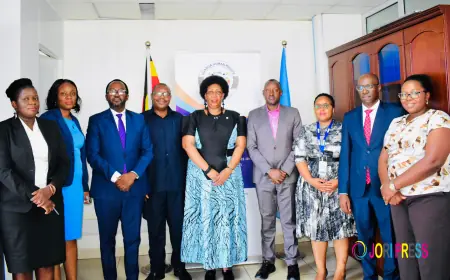Empowering Change Through Collaborative Education Networks: Building a Civil Society Movement for Public School Transformation
Platforms like Shikshagraha are demonstrating how collaboration for public school transformation can become a national movement rooted in shared learning, collective action, and people-led change. By fostering a civil society network focused on improving public education, Shikshagraha is helping to create systemic impact that extends beyond classrooms and into communities.

India’s public education system stands at a critical crossroads. With over 250 million students enrolled in schools across the country, the promise of equitable and quality education for all remains both an immense challenge and a powerful opportunity. To realize this vision, we need more than isolated efforts—we need collaborative education networks that unite educators, communities, policymakers, and civil society organizations in a shared mission.
Platforms like Shikshagraha are demonstrating how collaboration for public school transformation can become a national movement rooted in shared learning, collective action, and people-led change. By fostering a civil society network focused on improving public education, Shikshagraha is helping to create systemic impact that extends beyond classrooms and into communities.
The Need for Collaborative Education Networks
Education is not a solitary pursuit. It thrives in spaces of exchange—where ideas, experiences, and innovations are shared freely. Collaborative education networks enable these exchanges by connecting diverse stakeholders working towards the same goal: transforming the quality of education in public schools.
These networks bring together government departments, NGOs, educators, researchers, and community members to pool their knowledge and resources. Instead of working in silos, they collaborate to identify best practices, share challenges, and co-create scalable solutions.
For example, when an NGO in one district discovers an effective model for teacher training, that learning can be quickly shared through the network to other regions. This open exchange accelerates improvement and avoids the inefficiency of reinventing the wheel in every locality.
The strength of collaborative education networks lies in collective intelligence—the belief that when multiple voices contribute to solving a problem, the outcomes are more innovative, inclusive, and sustainable.
Collaboration for Public School Transformation
At the heart of educational reform lies the transformation of public schools—the backbone of India’s learning ecosystem. More than 70% of children in India still depend on government schools for their education. Yet many of these schools face systemic issues such as lack of infrastructure, teacher shortages, and limited community engagement.
Collaboration for public school transformation recognizes that these issues cannot be solved by government efforts alone. Public schools are community institutions, and their transformation requires a shared sense of ownership among citizens, educators, parents, and civil society.
Collaborative efforts can take many forms:
-
Teacher support networks that encourage peer learning and professional growth.
-
Community partnerships that engage parents and local leaders in school improvement activities.
-
Cross-sector alliances that link government programs with nonprofit and private sector expertise.
-
Technology-driven collaborations that make resources and training accessible to remote areas.
When collaboration becomes the foundation of public school transformation, it leads to holistic progress. Schools evolve into community hubs where everyone contributes—teachers inspire, parents participate, NGOs facilitate, and local authorities enable.
The Role of Civil Society Networks in Education
A civil society network plays a vital role in sustaining and scaling these collaborations. Civil society organizations often work at the grassroots level, where they have deep relationships with schools and communities. They understand the lived realities of students and teachers and can bridge the gap between policy and practice.
By forming a civil society network, these organizations can amplify their impact. Working together allows them to:
-
Advocate collectively for education policy reforms.
-
Share resources, research, and data to strengthen decision-making.
-
Coordinate on-ground efforts to avoid duplication and maximize reach.
-
Create platforms for public dialogue on education quality and equity.
Networks like Shikshagraha have emerged as catalysts in this ecosystem. By connecting changemakers across states and sectors, they create momentum for people-led education reform. Such networks remind us that education transformation is not a project with a deadline—it is an ongoing movement built on collective energy and shared purpose.
Shikshagraha: A People-Led Movement for Education Transformation
Shikshagraha is a growing movement that embodies the spirit of collaborative education networks. Inspired by the philosophy of collective action and public participation, Shikshagraha aims to unite educators, citizens, organizations, and government bodies to reimagine India’s public education system.
At its core, Shikshagraha believes that every individual has a role to play in transforming schools—whether as a teacher who innovates in the classroom, a parent who engages with the school community, or a youth volunteer who supports children’s learning.
The initiative creates platforms where stakeholders can collaborate, share knowledge, and co-design solutions. By nurturing a civil society network around education, Shikshagraha helps align local actions with national goals—bridging grassroots efforts with policy-level advocacy.
Some of the ways Shikshagraha fosters collaboration for public school transformation include:
-
Organizing community campaigns to raise awareness about the value of public education.
-
Supporting capacity-building initiatives for educators and administrators.
-
Facilitating partnerships between schools, NGOs, and government agencies.
-
Encouraging local innovations and storytelling to inspire replication across India.
Through this ecosystem approach, Shikshagraha is not only improving schools but also strengthening the social fabric that sustains education.
Building Sustainable Change Through Networks
True transformation happens when collaboration becomes a culture rather than a one-time effort. For collaborative education networks to be effective, they must be guided by principles of transparency, inclusivity, and continuous learning.
Each participant—be it a teacher, policymaker, or community leader—brings a unique perspective. Networks must create safe and open spaces where everyone’s voice is valued. Technology can further enhance this by enabling real-time collaboration across geographical boundaries.
Moreover, sustainability depends on shared ownership. When local communities take responsibility for their schools, they ensure that progress is maintained even after external support fades. This is why platforms like Shikshagraha focus on building capacity and agency rather than dependency.
The Way Forward: A Collective Commitment
India’s education future depends on how well we harness our collective potential. Strengthening collaborative education networks and civil society networks can turn isolated efforts into a national movement that redefines what education means for every child.
The path to public school transformation is not a sprint—it’s a marathon of collaboration, innovation, and persistence. Each small act—whether mentoring a teacher, supporting a local school, or joining a community dialogue—contributes to the larger vision of inclusive, high-quality education for all.
As Shikshagraha continues to expand this movement, it invites individuals and institutions alike to join in this shared journey. Because when we collaborate, we don’t just transform schools—we transform society.
Conclusion
Collaborative education networks and civil society networks are more than just frameworks—they are movements of hope, trust, and shared responsibility. Collaboration for public school transformation is not only about improving learning outcomes; it’s about empowering citizens to reimagine education as a collective good.
Through initiatives like Shikshagraha, India is witnessing how people-led collaboration can breathe new life into public education—creating a future where every child learns, every teacher thrives, and every community grows stronger together.
What's Your Reaction?
 Like
0
Like
0
 Dislike
0
Dislike
0
 Love
0
Love
0
 Funny
0
Funny
0
 Angry
0
Angry
0
 Sad
0
Sad
0
 Wow
0
Wow
0













































